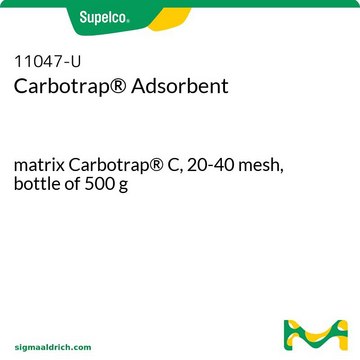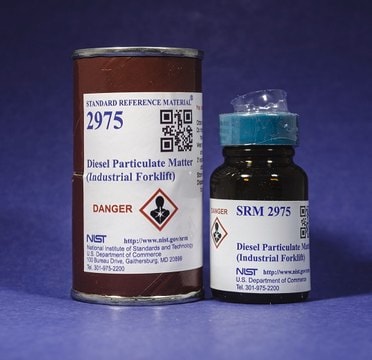699632
Kohlenstoff, mesoporös
nanopowder, less than 500 ppm Al, Ti, Fe, Ni, Cu, and Zn combined
Synonym(e):
Graphitized Carbon Black
About This Item
Empfohlene Produkte
Qualitätsniveau
Form
nanopowder
Mol-Gew.
Mw 12.011 g/mol
Zusammensetzung
C
Grünere Alternativprodukt-Eigenschaften
Design for Energy Efficiency
Learn more about the Principles of Green Chemistry.
sustainability
Greener Alternative Product
Oberflächenbereich
150-250 m2/g
Porengröße
0.342 cm3/g total pore volume (typical)
64 Å average pore diameter (typical)
bp
4827 °C
mp (Schmelzpunkt)
3654-3697 °C
Dichte
0.056 g/cm3 (Packing)
1.887 g/cm3 (absolute, typical)
Anwendung(en)
battery manufacturing
Grünere Alternativprodukt-Kategorie
, Enabling
SMILES String
[C]
InChI
1S/C
InChIKey
OKTJSMMVPCPJKN-UHFFFAOYSA-N
Suchen Sie nach ähnlichen Produkten? Aufrufen Leitfaden zum Produktvergleich
Allgemeine Beschreibung
Anwendung
Lagerklassenschlüssel
11 - Combustible Solids
WGK
nwg
Flammpunkt (°F)
Not applicable
Flammpunkt (°C)
Not applicable
Persönliche Schutzausrüstung
Eyeshields, Gloves, type P3 (EN 143) respirator cartridges
Hier finden Sie alle aktuellen Versionen:
Besitzen Sie dieses Produkt bereits?
In der Dokumentenbibliothek finden Sie die Dokumentation zu den Produkten, die Sie kürzlich erworben haben.
Kunden haben sich ebenfalls angesehen
Preparation: On Relation between the Composition and Properties,
Artikel
Mesoporous Materials include a range of high surface area porous silicates with applications in gas adsorption, drug delivery, diagnostics and catalysis.
Mesoporous materials are formed by a self-assembly process from combined solutions of sol-gel precursors (e.g., metal alkoxides) and structure-directing amphiphiles, usually block-copolymers or surfactants.
A key challenge for nanomaterial safety assessment is the ability to handle the large number of newly engineered nanomaterials (ENMs), including developing cost-effective methods that can be used for hazard screening.
Silica is a very popular inorganic nanomaterial used in a wide range of applications including fillers for rubber, catalyst supports, separation media, carriers in food and agriculture, and abrasive/anticaking agents in cosmetics. It is also widely believed to be an important material for biomedical applications for following reasons.
Unser Team von Wissenschaftlern verfügt über Erfahrung in allen Forschungsbereichen einschließlich Life Science, Materialwissenschaften, chemischer Synthese, Chromatographie, Analytik und vielen mehr..
Setzen Sie sich mit dem technischen Dienst in Verbindung.








